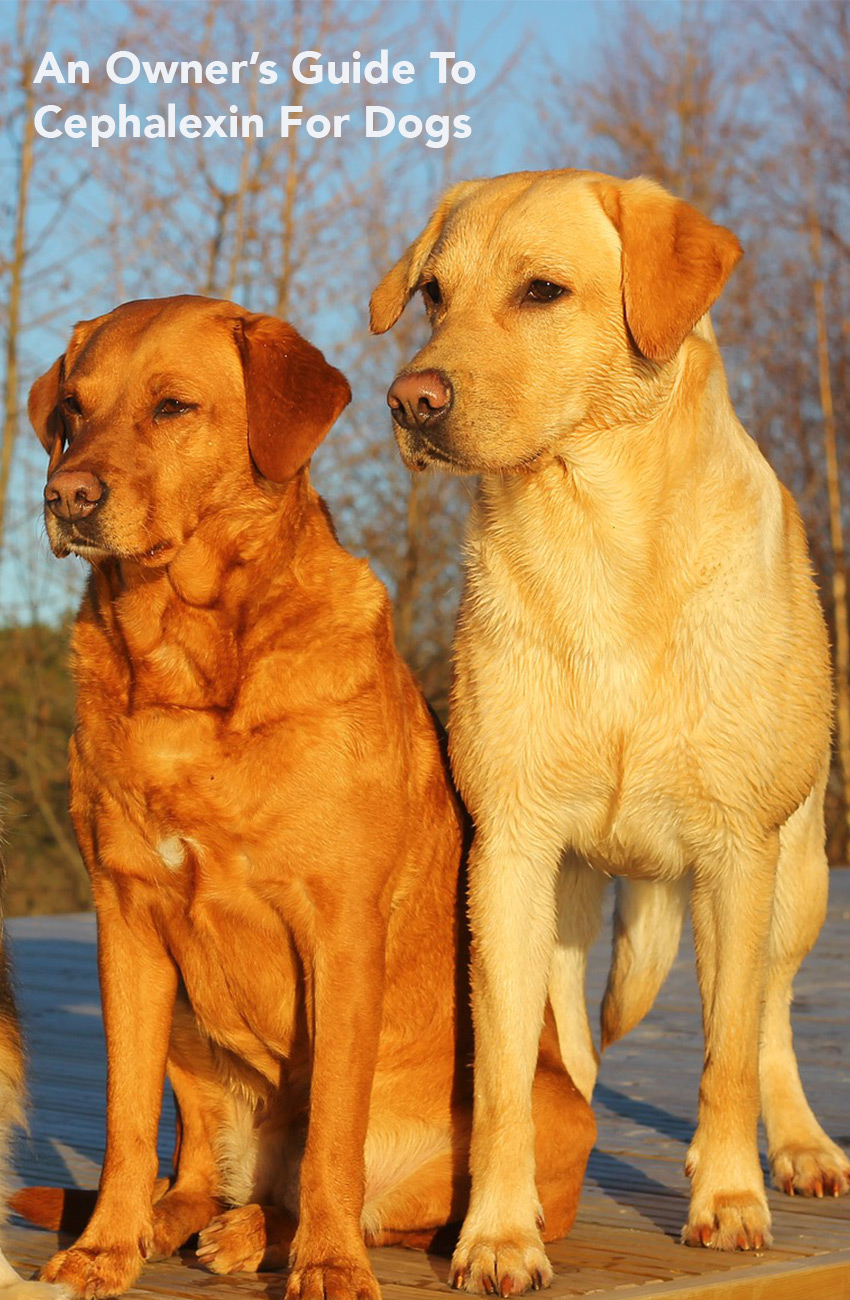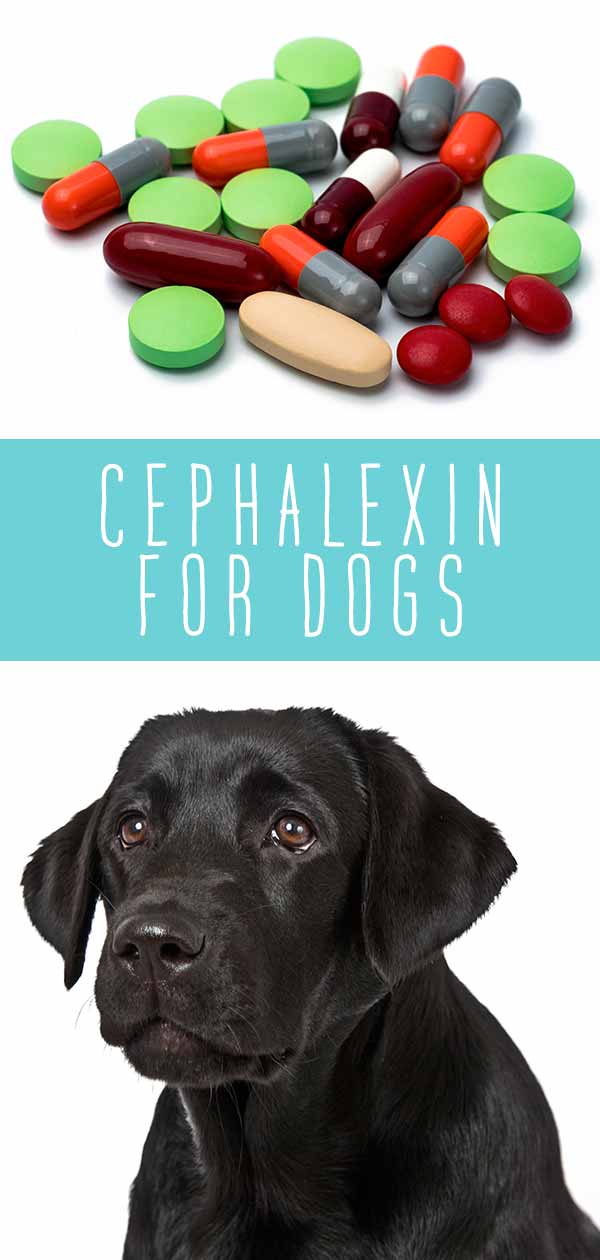Took Keflex at 200 Again at 900

Cephalexin for dogs is an antibiotic used to treat bacterial infections. Today we are going to answer all of your questions about Cephalexin for dogs. We'll tell you how it works, the dosage your dog needs. We'll also look at how effective it is, and what side effects your pup might experience.
- What is Cephalexin for dogs
- Trade names of Cephalexin for dogs
- Cephalexin for dogs dosage
- Ways to give dogs Cephalexin
- Side effects of Cephalexin for dogs
Cephalexin for dogs is a broad-spectrum antibiotic often used to treat S. Aureus infections in dogs. It is also effective against a wide range of other canine bacterial infections and has relatively few side effects.
What is Cephalexin for dogs?
A broad-spectrum antibiotic, Cephalexin is effective against gram-positive and gram-negative bacteria. Cephalexin works on these bacteria by causing cell wall rupture. That's the end of those bacteria.
It is a first generation cephalosporin, a type of antibiotic similar to penicillins. It is also known as Cefalexin, the same pronunciation with a different spelling. The drug is marketed under various trade names including:
- Keflex
- Keftab
- Rilexine
- Sporidex
- Biocef
What is Cephalexin used for in dogs
Cephalexin treats a wide range of canine bacterial infections. It is one of the most useful antibiotics in the veterinary toolbox. Cephalexin is also prescribed in dogs to prevent infection of the heart valves.
If your dog gets into a fight or otherwise experiences a wound or abscess, the vet may prescribe cephalexin. S. aureus is often found in skin infections, such as pyoderma or "hot spots." This is common side effect of Lab allergies. Along with cephalexin, your vet may prescribe a topical antibiotic treatment along with special shampoos.
Cephalexin for dogs is effective and cheap!
Another advantage of Cephalexin in dogs is that the medication is relatively inexpensive. Prompt treatment with cephalexin may prevent your dog from developing a secondary infection.
Effective and inexpensive. That's a combination hard to beat. The FDA has not approved it for use in dogs or any other animals. Veterinarians, however, are allowed to prescribe it under "extra label" provisions.
Cephalexin for infections in dogs
Cephalexin is useful for lots of infection, especially against Staphylococcus aureus infections. Other bacteria eradicated by Cephalexin include:
- E. coli
- Haemophilus influenza
- Klebsiella pneumonia
- Proteus mirabilis
- Streptococcus pneumonia and Streptococcus pyogenes
Veterinarians may prescribe Cephalexin for dogs diagnosed with skin, urinary tract, ear, joint and respiratory tract infections. Depending on the type of infection, the vet may prescribe other medications along with it.
How does Cephalexin for dogs work
Like all antibiotics, Cephalexin works by killing bacteria that cause infections. More specifically, the Merck Veterinary Manual notes that Cephalexin is "quite active" against many gram-positive bacteria. However, it is just "moderately active" against gram-negative bacteria. For anaerobic bacteria penicillin is more effective than Cephalexin.
Anaerobic bacteria are those organisms growing without oxygen. If your vet suspects a bacterial infection, she vet will take skin scrapings and/or a blood test. This will help to determine what kind of bacteria is responsible for your dog's problem.
Based on the findings, she may prescribe Cephalexin or penicillin to eliminate the bacteria. The choice of drug and dosage is also based on your dog's medical history.
Cephalexin dosage for dogs with infections
The typical Cephalexin dosage for dogs is 10 to 15 mg for each pound of body weight. That means a 50 pound animal may receive Cephalexin 500 mg for dogs.
Since Labs weigh in between 50 and 75 pounds, a dog on the lower end may receive Cephalexin 500 mg. Whereas on the upper end, Cephalexin 500 mg for dogs and Cephalexin 250 mg for dogs may constitute a dose. Your veterinarian will determine the appropriate Cephalexin dosage for your dog.

How often should I give my dog Cephalexin?
Your veterinarian will tell you how often to give your dog Cephalexin. It is important to follow their instructions closely. Cephalexin in dogs is generally given two to three times daily. It is best to give Cephalexin to your dog at the same time each day.
If you are late for a dose, give the medication as soon as possible. However, if it is nearly time for your dog's Cephalexin, just give the regular dose. Do not give your dog two doses of the drug at the same time.
The importance of consistent doses
A few studies have looked at the spacing of doses in varying concentrations. At doses of 20mg/kg, a 1999 study showed that in order to maintain therapeutic concentrations, it needed to be administered every six to eight hours.
A 2008 study compared 30mg/kg Cephalexin given once daily, with 15mg/kg Cephalexin given twice daily. It found no difference between the groups. Both treatments resolved the superficial pyoderma in the 14 dogs sampled.
This shows that Cephalexin treatment schedules may vary depending upon the dosage chosen, but that they should still all be effective. The important thing is to do exactly as your vet instructs. They will make sure to get the Cephalexin dosage for dogs right so you don't have to worry about it!
Other preparations of Cephalexin for dogs
Cephalexin is available in liquid, tablet and capsule forms. As always, make sure you stick to your vet's instructions for the best and safest results. It is important that we note here that human medication and dog medication are not always safe to share or swap.
You might have a Cephalexin capsule at home for example that you would like to treat your dog with. You're right in thinking the active ingredients are the same. However, the ingredients that make up the capsule may be toxic to your pooch.

Side effects of dog Cephalexin
As with any drug, Cephalexin side effects in dogs are possible. Some side effects of Cephalexin in dogs are alleviated by giving the medication with food. Always follow the veterinarian's dosing instructions.
Some dogs may feel nauseous, vomit or have diarrhea after taking Cephalexin. This occurs most often when the cephalexin dog dosage is given without food. Adding it to a meal might solve the problem.
Other potential side effects of Cephalexin in dogs include drooling, hyper-excitability and excess panting. Contact your vet if your dog exhibits any side effects. Also let your veterinarian know of any other medications or supplements your dog takes, as a drug interaction is possible.
Is Cephalexin safe for dogs
Cephalexin is generally safe for dogs. Make sure you follow your vet's instructions to the letter. The amount of Cephalexin prescribed varies depending on the type of infection with which your dog is diagnosed.
Dogs with certain underlying medical conditions may have the dosage adjusted.
Cephalexin side effects in dogs are not as worrisome as in some other medicines. That said, this doesn't absolve you of taking proper care when administering medication.
Dog Cephalexin toxicity
There are no exact figures for what might constitute a toxic dose. However, the manufacturers suggest that doubling your dog's dose may be toxic.
Using Cephalexin for dogs safely
As always, the most important thing is to consult with your vet before you administer any medication. Cephalexin is safe by and large. However, all medicines can be dangerous without the appropriate care.
Cephalexin overdoses in dogs
An overdose of Cephalexin in dogs is not likely to cause serious harm. However, it increases the likelihood of side effects. That's especially true of gastrointestinal issues. Consult your vet if you are worried about an overdose. Or, if he has managed to burrow his way into your medicine cabinet.
How long can dogs take Cephalexin for?
Most dogs do not receive this treatment for long-term use. That's because long-term use of Cephalexin in dogs may lead to kidney or liver issues. Blood platelet counts may also decrease. Most dog cephalexin prescriptions run for seven to 10 days.
Contraindications for dog Cephalexin
Cephalexin is contraindicated in some dogs. This includes dogs that are pregnant or nursing, or have been diagnosed with kidney failure. Epileptic dogs or those that ever experienced a seizure should not receive it.
The same holds true for dogs that have experienced bad reactions to penicillin or any other category of antibiotics. That extends to owners and caregivers. If you are allergic to penicillin, take care when handling cephalexin.
Rarely, cephalexin in dogs causes lameness or motor issues. These incidents occur most often in large breeds, generally bigger than Labrador retrievers. If you have a very large Lab, ask your vet about whether your dog can take cephalexin.
Can you give human Cephalexin to dogs
Although Cephalexin treats many types of infections. But it is crucial to know exactly what kind of bacteria is affecting your dog. That is why it is never a good idea to try treating a dog yourself with leftover Cephalexin given to you by a friend.
In the same vein, it is not recommended that you give any human antibiotics to your dog, including Cephalexin.
Human medication often comes in different doses to dog medication. It may also contain ingredients like xylitol that are toxic to dogs. Always consult your veterinarian before administering any medication to your dog.
When Cephalexin for dogs doesn't work
Although it is a broad-spectrum antibiotic, it may not treat your dog's condition. For example, Cephalexin is not effective against Enterobacter. This bacterium often causes canine skin, urinary tract and eye infections.
Giving a dog Cephalexin for such infections would not help the dog and could cause resistance. So, your dog may not respond to Cephalexin when he really does need the drug.
Always remember that antibiotics do not work against viruses. If a dog has a viral, or fungal infection, Cephalexin is not effective. Only testing by a vet will reveal the source of your dog's ailment.
If your vet prescribes the drug for your dog, she will explain the dosage for your pet. You can give your dog Cephalexin as prescribed, as it is given orally. As noted, ask your veterinarian about giving your dog cephalexin with food.

Cephalexin for dogs
Thanks to antibiotics like this, your dog may be on the road to recovery from infection quite soon.
Remember to give your dog Cephalexin for the entire seven to 10 day period as recommended by your vet, even if he appears fine after a few days on the drug.
Not completing the full course of antibiotics can mean the bacteria become resistant to Cephalexin. You don't want your dog to have a relapse.
Follow your vet's instructions, and your Lab should feel much better soon.
Cephalexin and your dog
Has your vet prescribed this drug to your dog? Did they find it helpful? We'd love to hear about your experiences in the comments below.
Find Out More
- METRONIDAZOLE FOR DOGS
- DOXYCYCLINE FOR DOGS
- APOQUEL FOR DOGS
- RIMADYL FOR DOGS
- PREDNISONE FOR DOGS
- TEMARIL P FOR DOGS
References and Further Reading
- Carli et al. Absorption kinetics and bioavailability of cephalexin in the dog after oral and intramuscular administration. Journal of Veterinary Pharmacology and Therapeutics.
- Cephalosporins and Cephamycins. Merck Veterinary Manual.
- Extralabel Drug Use and AMDUCA: FAQ. American Veterinary Medical Association.
- Toma, S et al. 2008. Efficacy and tolerability of once-daily cephalexin in canine superficial pyoderma: an open controlled study. Journal of Small Animal Practice.

The Labrador Site Founder

Pippa Mattinson is the best selling author of The Happy Puppy Handbook, the Labrador Handbook, Choosing The Perfect Puppy, and Total Recall.
She is also the founder of the Gundog Trust and the Dogsnet Online Training Program
Pippa's online training courses were launched in 2019 and you can find the latest course dates on the Dogsnet website
Source: https://www.thelabradorsite.com/cephalexin-for-dogs/

0 Response to "Took Keflex at 200 Again at 900"
Post a Comment